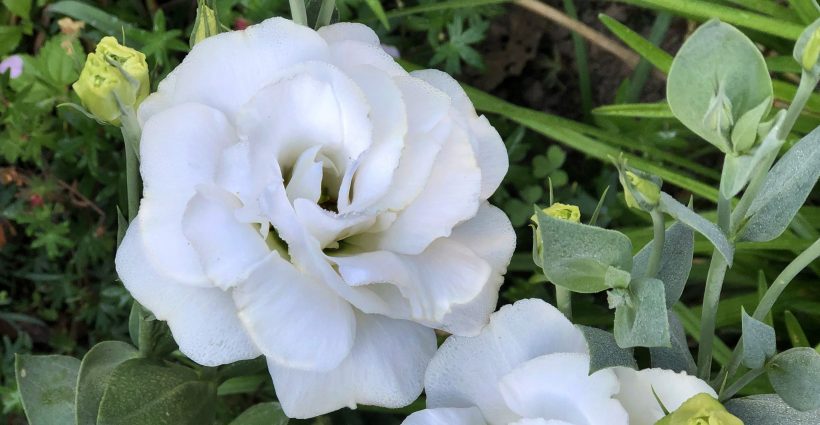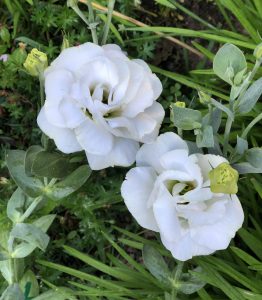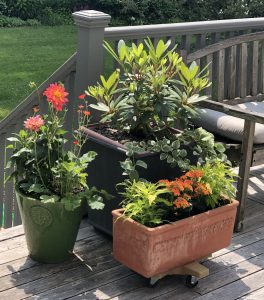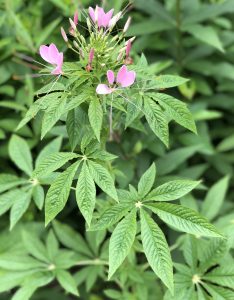designed for the way women work.

Annual Flowers Aim to Please, by Dorian Winslow
Category: Plant Ideas & Info, Presenting "The Curious Gardener"
You can’t beat an annual plant for its desire to please the gardener. It has one season to live and it puts all of its energy into producing flowers. If you plant a seed, either indoors or directly in the garden, some annuals will germinate and grow to maturity, producing a flower in as little as 8 weeks. Cut that flower and it takes it as a mandate to produce more flowers. Give it average soil and it’s ok with that. Not picky.
Strictly speaking, many plants we call annuals are actually tender perennials. In much warmer climates they survive year after year, but in my Zone 6 climate they cannot survive the winters outdoors. Plants that are tender perennials but are treated as annuals here in Zone 6 include: Lantana, dianthus and coleus.

Annuals are a great addition to the garden for several reasons. Once they start to bloom they bloom continuously throughout the season. In the early fall many annuals get a burst of growth spurred on by cooler temperatures. Many re seed so you can be assured of new plants next spring.
Annuals make great cut flowers. One of my favorites is lisianthus, which resembles a rose. I’ve never tried growing it from seed but I buy small plants at my local garden center and put them in the ground early in the season. Flowers are either white or pink and they are blooming in my garden now. They like well drained soil and full sun.
If you can, it’s best to cut your stems in the early morning or early evening to avoid wilting. Conditioning helps extend the life of your fresh cut flowers. To condition, put the stems in a bucket of warm water and recut the stems under water. Use a sharp cutting tool so the edge of the stem is not jagged, and cut at an angle to improve the uptake of water. Remove leaves that will be below the water line to prevent bacteria, and put your bucket in a cool dry place for a few hours as the stems take up water.

Annuals and container gardening go well together because you can count on a pop of color throughout the season. Plants grown in containers need a little extra care since they have a finite amount of resources at their disposal compared to a plant growing in the ground. Pay close attention to their water needs, nutrients and pests. At the end of the growing season you can leave your annuals right in the container and toss them in the compost heap the following spring — no fall cleanup is needed. If you live in a freezing climate and your containers are made of ceramic, however, you may need to wrap them or move them to your garage to prevent cracking.

This past spring I sowed cleome seeds indoors. I planted the seedlings out in the garden as soon as I knew there was no more possibility of a frost (late May). Cleome is sometimes called a spider plant and has white and pink-and-white blossoms. This majestic plant in my garden has already grown to 4 feet in height. I’ve been told they self sow so effectively that they can be a nuisance, so I’ll collect the seeds in the fall and start them indoors again next spring. That way I can have some control over where they pop up.
In some ways annuals are more work than perennials because you have to keep planting them each season. Is it worth it? I think so!



I am new to your emails and have much I want to learn about DIY gardening in my quaint backyard in Florida. Comments included such as references to resident zone and soil type aid in my particular brain-indexing as I learn.
Recent retiree who deals with arthritis but refuses to allow it to block my pursuit of passionate interests, look for helpful hints and maybe even recommendations for the most ergonomic tool to use when performing a yard task.
When I bought my first pair if long gloves locally, I also bought two sets of tools that were offered by the merchant (chain), hand and standing tools.
I am a firm believer in 1/3 of success is having the correct tools, to go along with knowledge and ability.
Possibly, your column could include tools to consider by functionality than are available in today’s world market that “fill the bill” so to say, for routine (and periodic) gardening.
For example, a more recent tool included in my standing set was a three-pronged flat, 3” bladed fork-like tool on the standard wooden ~50” handle. Appears to be suitable for a few standing tasks, like soil turning, weeding, snake piercing! Thanks